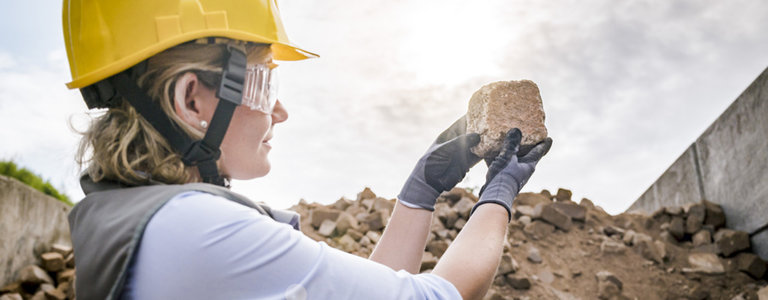
Feasibility Study: CO2 Capture as key component of sustainability strategy
RHI Magnesita, the world market leader in refractories, ahs ambitious sustainability targets. Among them is a 15 percent reduction CO2 emissions by 2025. To achieve this goal, the company also relies on the capture and utilization of carbon dioxides – and devotes considerable effort and resources to testing new technologies within the framework of new partnerships.
To reach the goal of net zero emissions, companies in energy-intensive industries in particular must undertake a number of different measures. Such is the case with RHI Magnesita, the world’s leading supplier of high-grade refractory products, systems and services. The company offers more than 120,000 products for the steel, cement, lime, non-ferrous metals, glass, energy, environmental and chemical industries. What really sets these products apart is the fact that they remain stable even under the most adverse conditions and at temperatures of 1,200 degrees Celsius, protecting firing and furnace systems from thermal, mechanical and chemical stress.
The manufacture of refractory products, however, is extremely energy-intensive and results in substantial CO2 emissions. “One of our top five corporate priorities is to strive for net zero emissions”, says Andreas Drescher, Project Manager Carbon Reduction at RHI Magnesita. “That’s why we have adopted a variety of measures – more recycling, improving energy efficiency, switching fuels as well as the use of green electricity.”
Testing new CCU Technologies
But Drescher is confident that conventional measures alone will not help RHI Magnesita get to net zero. This is because almost half of the carbon dioxide emissions are released during the processing of minerals. “For this reason, we will be investing €50 million in new technologies for the capture and utilization of CO2 emissions between now and 2025. In cooperation with leading research institutes and industrial partners, we are conducting industrial testing with these technologies and expect these efforts to deliver crucial progress and insights that will bring us closer to our climate targets”, says Drescher
The options developed by Bilfinger have been essential in helping us take the next steps forward and identifying the solutions that are best for us."
Initially, RHI Magnesita intends to reduce its emissions from Scopes 1, 2 and 3 (raw materials) by 15 percent before the end of 2025. For this purpose, the company has been measuring its CO2 emissions for several years and has already made encouraging headway in the three year period from 2018 to 2021. At the same time, partnerships have been developed with universities, research institutes, companies and industry platforms to identify opportunities to capture and utilize the CO2 generated during production.
Feasibility study illustrates scenarios
RHI Magnesita also approached Bilfinger about the project. The task was to prepare a feasibility study as well as a draft concept for a CO2 separation plant to be used in a production facility for the processing of magnesite. Bilfinger’s experts developed several scenarios as part of this study, identifying solutions for how the captured CO2 could be purified, liquefied and stored in a cryogenic storage facility for safe transport by truck or rail. This involved the development of a number of options that are made possible by a combination of different technologies.
“The options developed by Bilfinger have been essential in helping us take the next steps forward and identifying the solutions that are best for us”, Drescher explains. “The approaches we are now pursuing are extremely promising in terms of being able to continue to significantly reduce our Scope 1 emissions in the years ahead and taking a big step toward net zero.”

